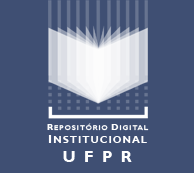PROCESS OF AGRICULTURAL PRODUCTION OF THE CHAMMOMILE CULTURE IN THE MUNICIPAL DISTRICT OF MANDIRITUBA, PR
DOI:
https://doi.org/10.5380/rsa.v3i1.1044Keywords:
Matricaria chamomilla, Chamomilla recutita, processo produtivo, adubação nitrogenada e potássica, produtividade de camomila, productive process, nitrogen and potassium fertilization, chammomile productivity.Abstract
The chammomile [Chamomilla recutita (L.) Rauschert] is a plant of temperate climate and it was introduced in Brazil by the European immigrants there is more than a hundred years, and today its production is concentrated in the metropolitan area of Curitiba, State of Paraná. The Municipal district of Mandirituba, in the average of the last six years, comes as the largest producer of chammomile of the country. The culture of the chammomile needs deep studies for the solution of technological problems and of market. With the objective of studying the process of agricultural production of the chammomile crop in the Municipal district of Mandirituba took place this research. The study of the productive process was accomplished by the application of an evaluation instrument to a group of 52,5% producers of chammomile of the Municipal district of Mandirituba looking for to detect the possible existent choking in the process. The analyzed variables were origin of the seeds, sowed area, sowing time, prepare of the soil, sowing system, succession of crops, cultivation treatments (pruning, control weed plants, covering fertilization and control of diseases and plagues), hand labor, harvesting, productivity, operational expense, post-harvesting processes, storage, commercialization and choking points. The descriptive statistics was calculated for the continuous variable and when it was categorical variables or of classes, the frequencies and respective percentages were calculated. For the variable productivity it was calculated the arithmetic average and respective confidence interval at the level of 5% of probability. The operational expense by hectare was organized in the form of expense extracts, as well as the sale price in agreement with the classification of the product. The medium productivity obtained in the research was of 430,1 kg/ha and the commercialization is accomplished in an individual way. Complementary to the study of the productive process of the chammomile crop in Mandirituba was settled an experiment in the field, in june of 1999, in the Municipal district of Mandirituba with the objective of studying the influence of the nitrogen and potassium fertilization in the productivity, evaluating the yielding in essential oil and in production of floral chapters, height of the plant, the incidence of the fungi disease stains brown and the number of open and shut floral chapters. The experimental design was randomized complete blocks with twenty treatments and three replications. The treatments consisted of the factorial arrangement of five doses of nitrogen (0, 50, 100, 150 and 200 kg of N/ha) in the urea form and four potassium doses (0, 60, 120 and 180 kg of K2O/ha) in the form of potassium chloride combined to each other. The variable productivity of floral chapters for the first harvesting showed significance to the factor nitrogen and potassium. Relationship was not observed between the doses of nitrogen and potassium in the incidence of the disease stains brown for the conditions of this experiment as in the first and in the second harvesting.
Downloads
How to Cite
Issue
Section
License
Direitos Autorais para artigos publicados nesta revista são do autor, com direitos de primeira publicação para a revista. Em virtude da aparecerem nesta revista de acesso público, os artigos são de uso gratuito, com atribuições próprias, em aplicações educacionais e não-comerciais.


